Mary Casillas, Undergraduate WFSC Student

During the summer and fall of 2017, I interned at the Biodiversity Research and Teaching Collections (BRTC) at Texas A&M University (TAMU). The BRTC is a natural history collection, housing specimen data from a variety of organisms from all over the world. I have helped organize data and materials for the collections so that this information can be made available to the scientific and public communities. This material can be organized in files that are sent to a large collective database, VertNet. VertNet is an online database that disseminates biodiversity data from bio collections all around the world. The database provides tools for collaborating, sharing and publishing biodiversity data. Through VertNet, anyone (including other collections and institutions) can access the data from TAMU BRTC for their own use. VertNet also trains users to practice quality biodiversity data curation and publication such that these important data can be easily used across a variety of platforms.
The process of databasing BRTC data:
My internship at the BRTC involved organizing and documenting ancillary data from specimens so that these data could be added to the BRTC databases and VertNet. Ancillary data are things taken from individual specimens, such as parasites or tissues and DNA for molecular work. I began my work in one of the -20 work freezers. These freezers house tissues, DNAs and parasites that have not been organized or entered into the collection databases and are called work freezers for this reason (the samples need to be worked on before being stored permanently in the collection). Tissues are generally samples taken from specimen’s liver, kidney, heart, ear or feces and DNA samples are usually derived from tissues samples through an extraction process in the laboratory. Parasites normally consist of ectoparasites such as ticks, fleas, or lice- that were taken from the specimen’s body.
Each type of ancillary data is located in a small tube, with the collector initials and numbers written on the outside of the tube. Tissues, DNAs and parasites are grouped in together in separate boxes for easier organization and access. To organize each type of ancillary data, tubes are organized sequentially by collector initials and number in freezer boxes with the small 9X9 grids that keep the tubes in order. Once a collector has filled a box sequentially with samples, the box is labeled with collector initials and a number and moved from a work freezer to a -80 freezer for permanent storage and the data (type of sample and box number) are transferred to the collection databases. Racks are utilized to organize freezer boxes within the -80 freezers and there are maps posted on the outside of each freezer detailing the exact locations of each freezer box. The large -80 freezers provide quality preservation of the samples, and should be opened as little as possible to prevent humidity from entering the freezers, which could cause long-term inefficiency and damage the samples and shelving. All data from the specimens, obtained from collector catalogs, are formatted for the BRTC databases and then fed to VertNet for screening. Once the data formats are acceptable by VertNet, the submission of biodiversity data will be added to the free domain for anyone to access.
How can the scientific and nonscientific communities use the BRTC data?
Once the data are accessible in multiple databases, both scientific and non-scientific communities can freely access the information. These communities could use the search engine to look up a specific species of interest, and find data that the BRTC (or any other biocollection) has collected for specimens representing that species. Advanced search options are available for users to search for a specimen by catalog, institution and much more. A collector can also search for specimens that have tissue data, georeferencing information, or media available. This sharing of information ensures that every bit of data collected is being applied to its full potential.








